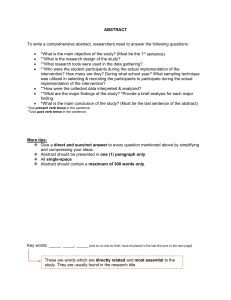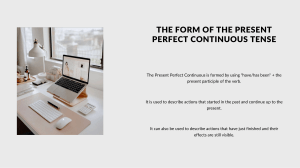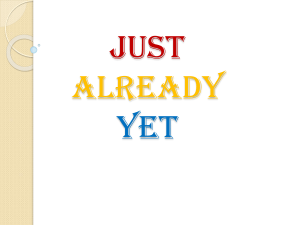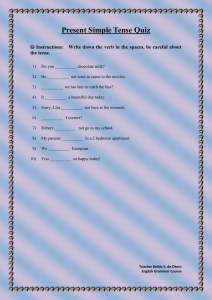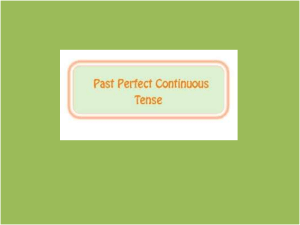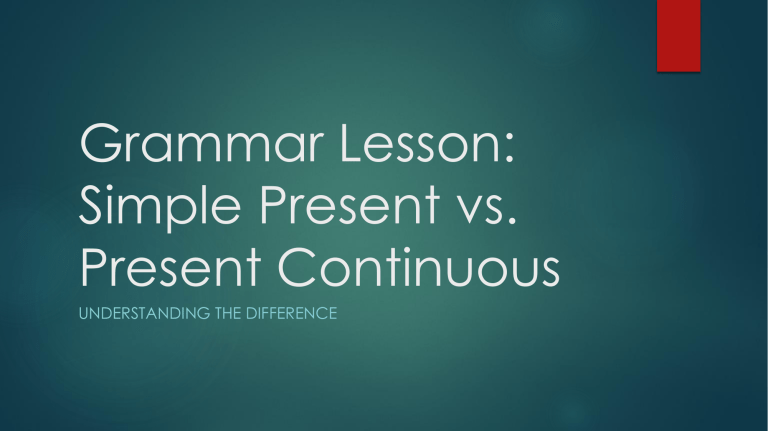
Grammar Lesson: Simple Present vs. Present Continuous UNDERSTANDING THE DIFFERENCE Introduction In English grammar, the simple present and present continuous are two important tenses. They are used to express actions and states, but they have different uses. Let's explore when and how to use each tense. Simple Present Tense The simple present tense is used to describe general truths, habitual actions, and permanent states. It is formed by using the base form of the verb. Simple Present Examples 1. I eat breakfast every morning. 2. Water boils at 100 degrees Celsius. 3. The sun rises in the east. Present Continuous Tense The present continuous tense is used to describe actions happening at the moment of speaking or around the present time. It is formed by using the present participle of the verb. Present Continuous Examples 1. I am studying for my exam right now. 2. They are playing football in the park. 3. She is cooking dinner at the moment. When to Use Simple Present Use the simple present tense for: - General truths and facts - Habits and routines - Permanent states and situations When to Use Present Continuous Use the present continuous tense for: - Actions happening right now - Temporary actions and situations around the present time Exercise: Fill in the blanks with the correct form of the verb (simple present or present continuous). 1. She usually (go) to the gym in the evenings, but today she (study) for her exam. 2. They (watch) a movie right now, so please be quiet. 3. The Earth (revolve) around the sun. 4. I (write) an email at the moment, so I'll call you back later. Exercise Key 1. goes / is studying 2. are watching 3. revolves 4. am writing
